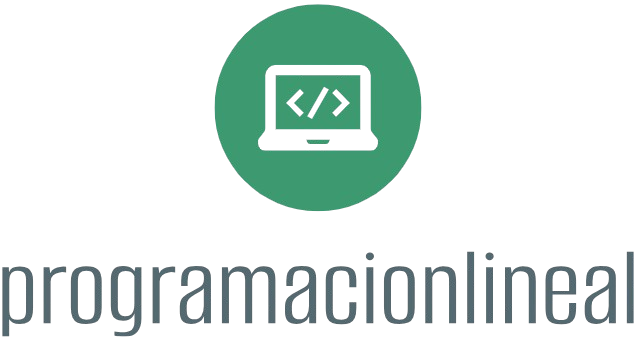Node.js is a popular platform for backend development due to its non-blocking I/O model, event-driven architecture, and support for JavaScript. It’s particularly well-suited for building scalable, high-performance applications. Here’s a comprehensive guide on how to get started with Node.js for backend development.
- Setting Up Your Development Environment
Install Node.js
- Download: Go to the [Node.js website](https://nodejs.org) and download the latest stable version (LTS).
- Install: Follow the installation instructions for your operating system.
- Verify Installation: Open your terminal or command prompt and run:
“`bash
node -v
npm -v
“`
This checks that Node.js and npm (Node Package Manager) are installed correctly.
- Creating Your First Node.js Application
- Create a Project Directory:
“`bash
mkdir my-node-app
cd my-node-app
“`
- Initialize a new Node.js Project:
“`bash
npm init -y
“`
This creates a `package.json` file with default settings.
- Create a Basic Server:
Create a file named `server.js` and add the following code:
“`javascript
const http = require(‘http’);
const hostname = ‘127.0.0.1’;
const port = 3000;
const server = http.createServer((req, res) => {
res.statusCode = 200;
res.setHeader(‘Content-Type’, ‘text/plain’);
res.end(‘Hello World\n’);
});
server.listen(port, hostname, () => {
console.log(`Server running at http://${hostname}:${port}/`);
});
“`
- Run the Server:
“`bash
node server.js
“`
Visit `http://127.0.0.1:3000` in your web browser to see “Hello World”.
- Using Express.js for Enhanced Functionality
While the built-in `http` module is straightforward, using a framework like Express simplifies creating web servers and APIs.
Install Express
- Install Express via npm:
“`bash
npm install express
“`
- Create a Basic Express Server:
Update `server.js` to use Express:
“`javascript
const express = require(‘express’);
const app = express();
const port = 3000;
app.get(‘/’, (req, res) => {
res.send(‘Hello World!’);
});
app.listen(port, () => {
console.log(`Server running at http://localhost:${port}/`);
});
“`
- Run the Server:
“`bash
node server.js
“`
Visit `http://localhost:3000` to see “Hello World!” served by Express.
- Building RESTful APIs
Express makes it easy to create RESTful APIs. Here’s how you can define a simple API.
Example: Creating an API for a Simple Todo Application
- Install Body-Parser:
For parsing incoming request bodies, use the `body-parser` middleware.
“`bash
npm install body-parser
“`
- Set up the Todo API:
Update `server.js`:
“`javascript
const express = require(‘express’);
const bodyParser = require(‘body-parser’);
const app = express();
const port = 3000;
// Middleware
app.use(bodyParser.json());
let todos = [];
// Get all todos
app.get(‘/todos’, (req, res) => {
res.json(todos);
});
// Add a new todo
app.post(‘/todos’, (req, res) => {
const todo = { id: todos.length + 1, text: req.body.text };
todos.push(todo);
res.status(201).json(todo);
});
// Get a todo by ID
app.get(‘/todos/:id’, (req, res) => {
const todo = todos.find(t => t.id === parseInt(req.params.id));
if (!todo) return res.status(404).send(‘Todo not found’);
res.json(todo);
});
app.listen(port, () => {
console.log(`Server running at http://localhost:${port}/`);
});
“`
- Testing the API:
You can use tools like Postman or cURL to test the API.
– Get all todos:
“`bash
curl http://localhost:3000/todos
“`
– Add a new todo:
“`bash
curl -X POST http://localhost:3000/todos -H “Content-Type: application/json” -d “{\”text\”:\”Learn Node.js\”}”
“`
- Connecting to a Database
To make your application more robust, you may need to store your data persistently. Common choices include MongoDB and PostgreSQL. Here’s how to connect to MongoDB using Mongoose, a popular ODM library.
Install Mongoose
- Install Mongoose:
“`bash
npm install mongoose
“`
- Set Up MongoDB:
Make sure you have MongoDB installed locally or use a service like MongoDB Atlas. Update your `server.js`:
“`javascript
const mongoose = require(‘mongoose’);
mongoose.connect(‘mongodb://localhost:27017/mydatabase’, { useNewUrlParser: true, useUnifiedTopology: true })
.then(() => console.log(‘MongoDB connected’))
.catch(err => console.error(‘MongoDB connection error:’, err));
const todoSchema = new mongoose.Schema({
text: String
});
const Todo = mongoose.model(‘Todo’, todoSchema);
// Replace in-memory todos with MongoDB CRUD operations as needed
// Example: Create a new todo
app.post(‘/todos’, async (req, res) => {
const todo = new Todo({ text: req.body.text });
await todo.save();
res.status(201).json(todo);
});
“`
- Error Handling and Middleware
In production applications, you must handle errors properly:
“`javascript
app.use((err, req, res, next) => {
console.error(err.stack);
res.status(500).send(‘Something broke!’);
});
“`
- Running in Production
For running your Node.js application in production, consider using a process manager like PM2 or deploying via services like Heroku, AWS, or DigitalOcean.
- Install PM2 Globally:
“`bash
npm install -g pm2
“`
- Start Your Application:
“`bash
pm2 start server.js
“`
Conclusion
Node.js is an efficient platform for building backend applications, particularly when combined with Express and a database. By following the steps outlined in this guide, you can set up a simple server, create RESTful APIs, handle data persistence, and prepare your production application. As you grow more comfortable with these basics, consider exploring more advanced topics such as WebSockets, microservices architecture, and serverless deployments











